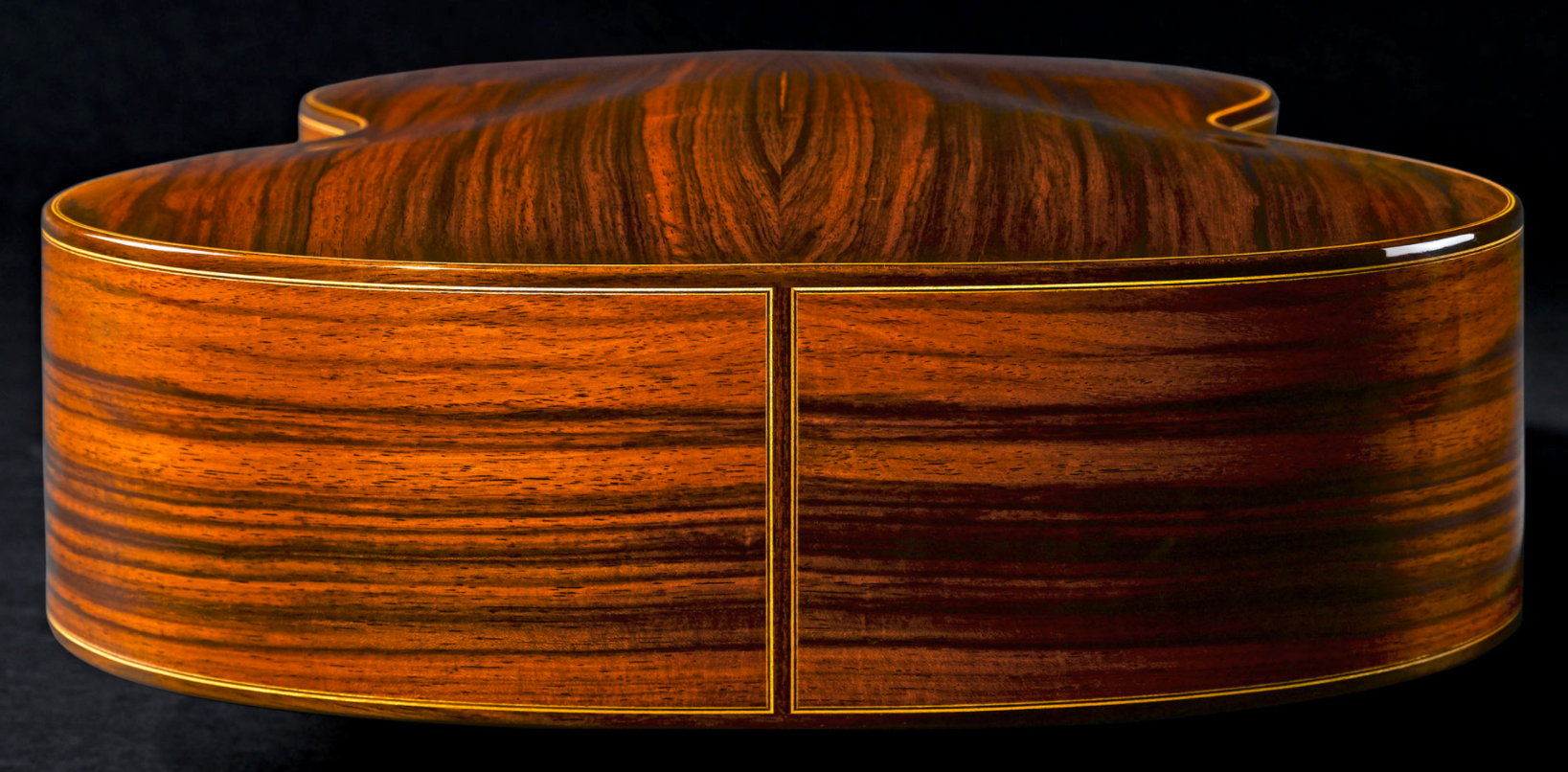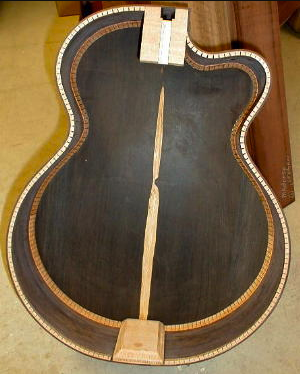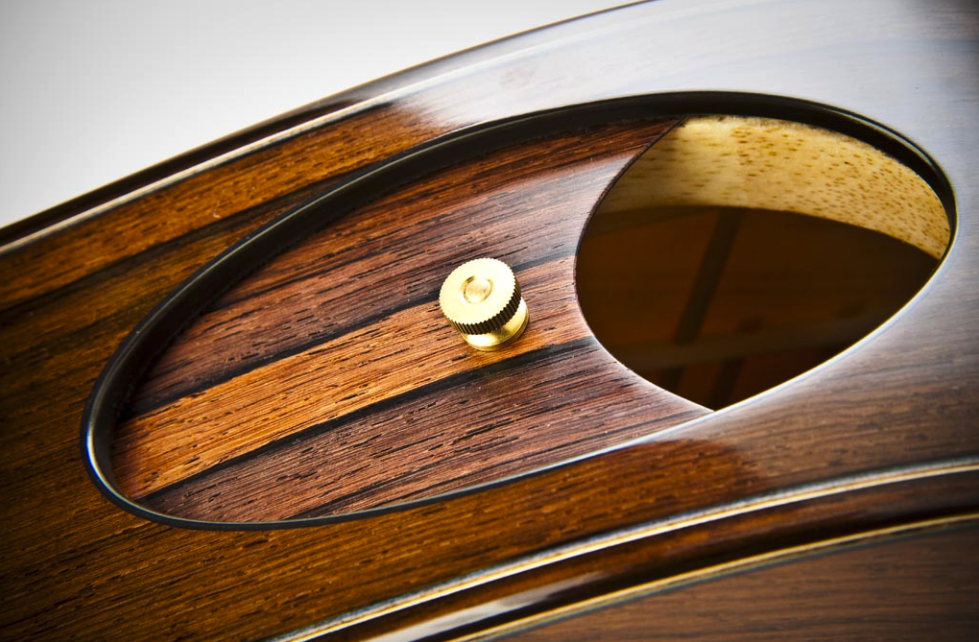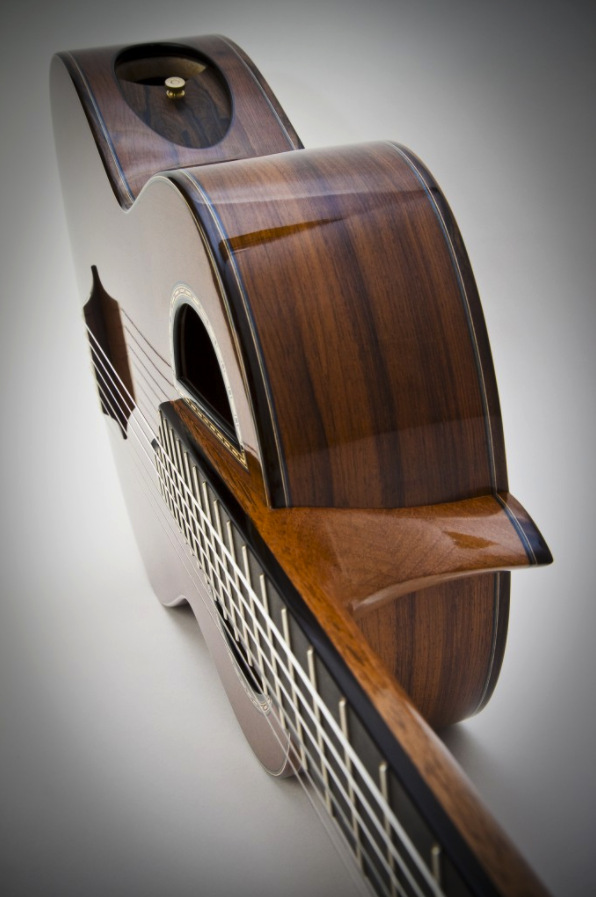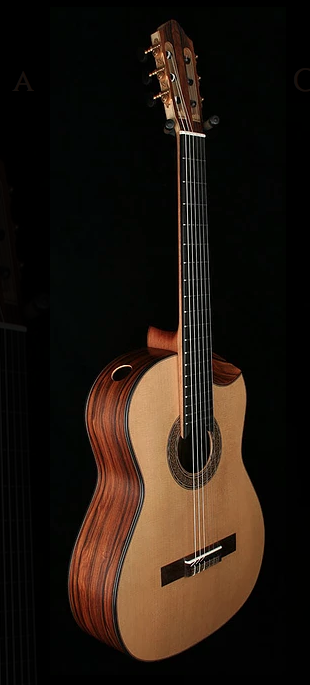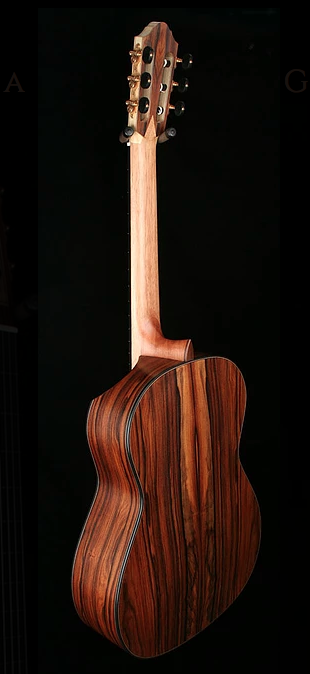Modern Classical Guitar Design Part 7: Arched Back
The Arched back (braceless) design feature has been around for a while on acoustic guitars but luthiers in the classical guitar realm have only recently started incorporating the design into classical guitars. Find out a little more about the arched back innovation by reading my article.
Introduction
Classical guitars have been around in their present form for circa 200 years. Since that time their design has been an ongoing, constant, breathing topic. Unlike many other instruments from that time the design of classical guitars and guitars in general hasn't stopped evolving. Many luthiers are constantly striving to improve the design by making guitars easier to play, lighter & stronger with beautiful tones and aesthetics to match.
One such design that has been gaining more ground over the past few decades is the 'arched back classical guitar'.
Traditional Vs Arched
One of the best ways to describe the arched back of a classical guitar is to compare it to the traditional back which was for all intents and purposes - flat. The picture below shows a traditional classical guitar design with a flat back.
Pictured below is a wonderful picture clearly showing the arched back and its radically different style.
From the two pictures above it is very easy to see the aesthetic differences between the two designs. Yet perhaps the most important point to consider is the impact upon volume, comfort, and tonal difference that an arched-back designed guitar has compared to it's flat-backed predecessors.
A little bit of history
Arched back guitars have been around for at least 4 decades and have been used quite regularly in acoustic guitar design by famous makers such as Taylor and Guild. Their use and integration into production-model guitars by such well-known and respected guitar makers is a definitive sign that the design works and has been accepted by the guitar community at large. Classical guitar makers have been a bit slower to adopt the arched back design but it is definitely gaining momentum and acceptance by luthiers around the globe.
Pros & Cons
At the heart of the matter is sound and more so the quality of sound. Many guitar makers in recent years have been striving to make classical guitars that have more projection and are louder than the guitars of yesteryear. There is a school of thought out there that believe the beautiful lively tones of Ramirez & Hauser has been superseded & replaced by guitars that have volume but lack the beautiful and somewhat earthy and wild sound of older instruments. This of course if purely subjective and there are posits for both camps.
Let's look at the Pros
- Increased rigidity - similar to the strength of an arch in a building or bridge
- Focused - the parabolic shape is said to 'focus' the projection of the sound
- Raises the resonant frequency
- Increased sustain
A rare glimpse at an arched back with 'braceless construction'.
Let's look at the Cons
- Heavier than a comparable flat back
- Tend to sound 'darker'
- Excess sustain can 'muddy' up the sound
Where can I buy one?
Here's a nice list of luthiers that are making braceless arched back classical guitars with great results:
I have to be honest and say that the only arch back guitars I've played have all been Ovation guitars (which is about as arched as it gets!) so I'm writing this article based upon testimonies of luthiers and players. Please leave a comment below and also check out my other articles on modern classical guitar design innovations.
Check out my other Modern Classical Guitar Design articles
Part 8: Fanned Frets
Part 6: Double Tops
Part 5: Lattice Bracing
Part 4: Armrest
Part 3: Soundport
Part 2: Indented Cutaway
Part 1: Elevated Fingerboard
Let your fingers fly!
Modern Classical Guitar Design Part 3: Soundports
Soundports...enigmatic 'holes' near the heel of the neck that almost look like someone drilled a gigantic void into your guitar to see how it worked. Read this article for an insight into these mysterious 'guitar circles'.
Introduction
Traditionally guitars have had a single soundhole located at the front of the guitar to allow the sound to escape and be heard by the guitarist and the audience. There have been many variations on the shape, size, style, and placement of the soundhole with varying levels of success. In recent years however a movement amongst luthiers to place a soundport or sound portal on the upper and sometimes the lower bout of the guitar has gained momentum and acceptance into the classical guitar community.
Why?
Inevitably one must ask the question "Why would I want a classical guitar with a soundport?" The answer to this can be explained as follows:
- Personal monitoring. A soundport can act as a 'stage monitor' allowing you to hear your instrument with increased clarity. This is particularly important in ensemble playing where the guitar is usually easily lost in the mix.
- Ensemble monitoring. With a soundport more of the guitars' sound is being projected upwards and to the side thus giving the opportunity for your fellow performers to hear you more clearly.
- Brightness. A soundport can open up a dull sounding instrument. How this is achieved isn't exactly known but many owners that have added a soundport(s) to an instrument have remarked that their guitar sounds brighter with increased resonances and higher frequencies.
- Fine tuning. From a luthier's perspective a soundport can enable 'fine tuning' of the instrument whereby the a luthier can alter the size of the soundport to adjust the high frequency response attributable to the changing cavity resonance.
A few words from Luthiers...
- Kris Barnett on Soundports
- Fritz Mueller on Soundports
- Kenny Hill on Soundports
Soundport Variations
It seems that not all soundports are created equal - some are huge, some are perfectly round whereas others are an oval shape. To complicate matters further some can be partially or completely closed using magnetic systems or as you see in the first picture in this article others have a sliding design that will allow you to adjust the size of the soundport.
The image at the beginning of this article features a 'sliding soundport' by Florian Vorreiter. Rather uniquely that soundport is actually located at the lower bout of the guitar just below where your forearm rests on the guitar.
Check out this amazing photo build and article of a magnetic soundport cover system by Carlos Juan Busquiel.
The Verdict
All in all it does seem like a soundport or soundports are a wonderful innovation in the classical guitar realm. It seems that they should become a standard feature on classical guitars along with an elevated fretboard (seem my blog article on elevated fretboards here). The advantages of having one or two on your guitar are great.
Check out my other articles in the
'Modern Classical Guitar Design Series':
Part 8: Fanned Frets
Part 7: Arched back
Part 6: Double Tops
Part 5: Lattice Bracing
Part 4: Armrest
Part 2: Indented Cutaway
Part 1: Elevated Fingerboard
Modern Classical Guitar Design Part 2: Indented Cutaway
The 'Indented Cutaway' or 'Bevelled Cutaway' is a very new design innovation for classical guitars. Find out a little more about this newcomer to classical guitar design and which luthiers are making guitars that have this idea incorporated into their design.
Bellucci guitar with an 'Indented Cutaway' from Mangore guitars.
Introduction
Access to frets past the 12th fret has gained increasing attention from luthiers and guitarists for at least a decade. I mentioned in Part 1 of my series on modern classical guitar design that an 'indented cutaway' is a somewhat modern design feature that a few luthiers are starting to incorporate into their designs.
Standard Cutaway vs Indented Cutaway
Here are two of my own guitars showing two of the most common types of cutaway. The guitars are Takamine TNV460SC on the left and a Takamine TH5C on the right. I have two video reviews of both of these guitars that you can watch farther on in this article.
Here is a full review of my Takamine TH5C Hirade model.
The Indented Cutaway
With an indented cutaway only a small section of the soundboard, back & sides is removed. The fundamental idea is that the overall sound and projection of the guitar isn't compromised but access to the higher frets is improved. This is best shown by a picture.
One of Kris Barnett's stunning guitars featuring an indented cutaway.
As you can see the smaller cutaway leaves a significant amount of the guitars' chamber undisturbed.
Pros
- Improves access to upper frets
- Visually striking
- Has an unusual and modern look
Cons
- Has an effect on the power on tone of the instrument
- Probably not as effective as a raised fretboard
- Clearly visible departure from a standard classical guitar design
- Niche design therefore it could be difficult to resell
The same Kris Barnett guitar when viewed from the rear. As you can see the indented cutaway removed minimal wood from the guitar.
My Verdict
I'd love to try one. Sadly, I haven't had the opportunity to play a guitar with an indented cutaway for two reasons:
- Very few luthiers actually make this design
- Those that do are expensive and usually have extremely long waiting lists
I think it could be a really great feature to have on your guitar but I think I'd probably choose an elevated fretboard rather than this particularly for resale purposes.
So...where can I buy one?
Here are two luthiers that make these guitars:
Check out my other articles in the
'Modern Classical Guitar Design Series':
Part 8: Fanned Frets
Part 7: Arched back
Part 6: Double Tops
Part 5: Lattice Bracing
Part 4: Armrest
Part 3: Soundports
Part 1: Elevated Fingerboard


